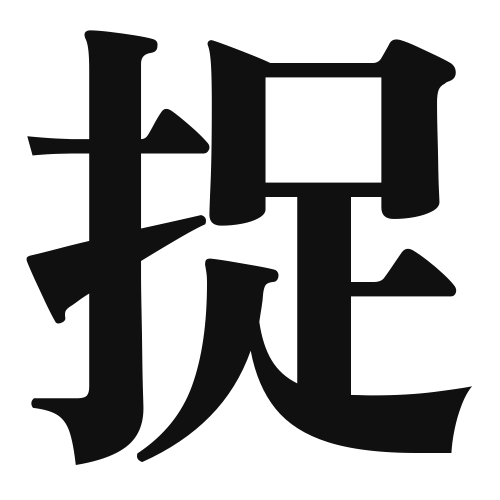1. Overview of Meaning
The kanji “捉” (toru) means “to catch,” “to seize,” or “to grasp.” It conveys the idea of capturing something physically or conceptually, such as an idea or a moment.
2. Formation and Radical
Formation of the Kanji: The kanji “捉” is a compound character (会意文字) that combines the radical for “hand” (扌) with the character “捉” which relates to the act of catching or seizing.
Radical: The radical of “捉” is 扌, which is a variant of 手 (te), meaning “hand.” This radical is commonly found in kanji related to actions performed by hand.
3. Examples of Usage
Common Words and Phrases: Some frequently used words that include “捉” are:
- 捉える (toraeru) – to catch, to capture
- 捉え方 (toraekata) – way of understanding or interpretation
Example Sentences in Daily Conversation:
- 彼はそのチャンスを捉えた。 (Kare wa sono chansu o toraeta.) – He seized that opportunity.
- この問題をどう捉えますか? (Kono mondai o dou toraemasu ka?) – How do you perceive this issue?
4. Synonyms and Antonyms
Similar Kanji: A similar kanji is 捕 (ho), which also means “to catch” but often implies capturing something alive, like an animal. 捉 (toru) is broader and can refer to capturing ideas or moments as well.
Antonyms: An antonym for “捉” could be 放 (ho), which means “to release” or “to let go,” indicating the opposite action of catching or seizing.
5. Cultural and Historical Background
Relation to Japanese Culture: The concept of “捉” is significant in various aspects of Japanese culture, including martial arts, where the ability to seize an opportunity is crucial.
Proverbs and Idioms: One relevant proverb is “チャンスを捉えよ” (Chansu o toraeyo), which translates to “Seize the opportunity,” emphasizing the importance of acting decisively when opportunities arise.
